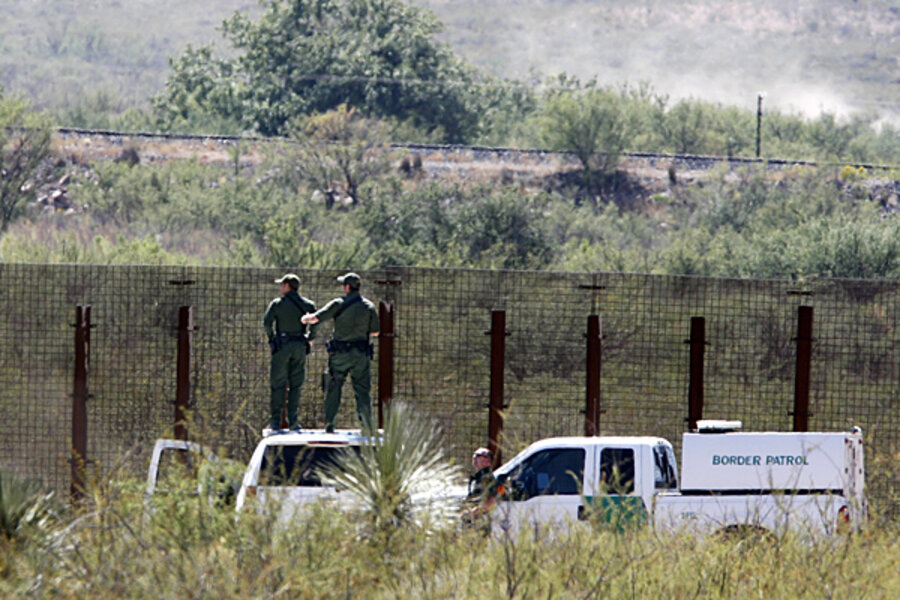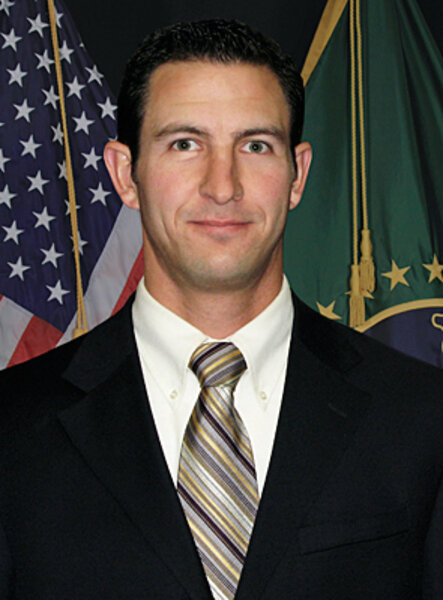Slain border patrol agent worked a well-worn drug-smuggling corridor
Loading...
| Tucson, Ariz.
Authorities are still piecing together the events leading to the shooting death Tuesday of a US border patrol agent and the wounding of another in remote southern Arizona.
Nicholas Ivie, who had worked for the agency since 2008, was killed while patrolling along the US-Mexico border, according to Customs and Border Protection. The second agent, whose name was not disclosed, is expected to recover from his wounds. A third agent was unharmed in the shooting that happened shortly before 2 a.m. about five miles north of the border, authorities say.
Investigators had named no suspects as of late Tuesday, although Acting Cochise County Sheriff Rod Rothrock, whose office is probing the shooting with the FBI, said there may be "at least two suspects, maybe more."
The border agents had responded to a tripped ground sensor in the area, a well-worn corridor for smugglers trying to get illegal drugs across the border, when the shooting occurred. Authorities have not said whether the agents fired their guns or if investigators have recovered any weapons at the scene.
Mr. Ivie, who was 30 and a Utah native, was assigned to a border patrol station in the small town of Naco, Ariz., that just two weeks ago was renamed in honor of border patrol agent Brian Terry, also shot dead in the line of duty in 2010. His death later was linked, through two guns found at the crime scene, to the now infamous gun-running operation "Fast and Furious."
Soon after Ivie's death, politicians from Arizona and beyond blamed the shooting on lax border security and alluded to the ill-fated operation of the Bureau of Alcohol, Tobacco, Firearms and Explosives.
"Flags will be lowered in honor of the slain agent. Elected officials will vow to find those responsible. Arizonans and Americans will grieve, and they should. But this ought not only be a day of tears," Arizona Gov. Jan Brewer (R) said in a statement. "There should be anger, too. Righteous anger – at the kind of evil that causes sorrow this deep, and at the federal failure and political stalemate that has left our border unsecured and our Border Patrol in harm's way," said the governor, who has feuded with the Obama administration over immigration policy.
In his own statement about Tuesday's shooting, Republican Sen. Charles Grassley of Iowa alluded to the gun-tracking case.
"There's no way to know at this point how the agent was killed, but because of Operation Fast and Furious, we'll wonder for years if the guns used in any killing along the border were part of an ill-advised gunwalking strategy sanctioned by the federal government. It's a sad commentary," he said.
To others, the shooting is mainly the latest example of the dangers that border patrol agents face on the job. Ivie is the fourth agent to die in Arizona in the past four years as a result of conflict on the border.
"I know [Homeland Security] Secretary [Janet] Napolitano is making the claim that it's safer now than it's ever been, but I don't believe that to be true," George McCubbin, president of the National Border Patrol Council, says of the US-Mexico border. "The agents in the field don't believe that to be true."
Though he has noticed more shootings and a higher level of violence along the border in recent years, Mr. McCubbin says it is still rare for border patrol agents to be shot to death. Over the years, more have perished in crashes, he adds.








